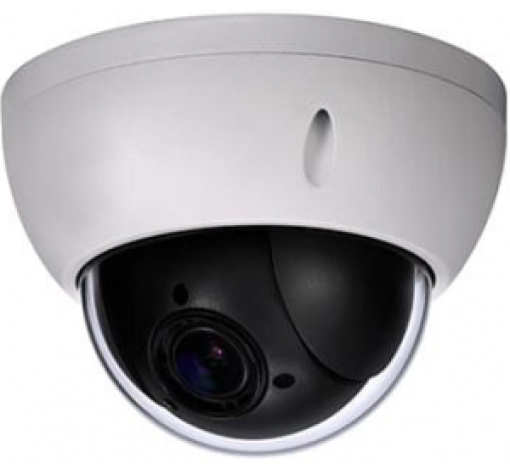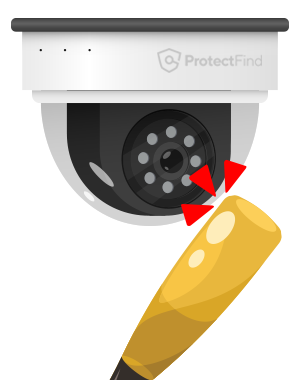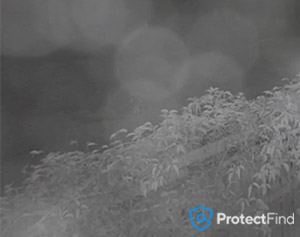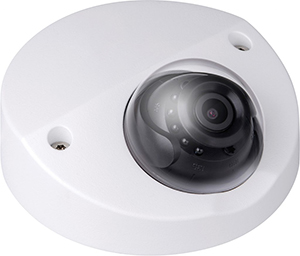Are Dome security cameras right type of camera for your situation?
Dome security cameras have many advantages, but also many disadvantages which you may not be aware of.
In this article we talk about the pros and cons, the situations where you should use a dome security camera, and when you should not.
by Bryce Whitty
started ProtectFind to help people get the right security system for their goalsBryce is a registered Security Advisor who started ProtectFind to help people get the right security system for their goals.
1
What is a Dome CCTV Camera?
There is a bit of confusion about what a "Dome security camera" actually is, as some manufacturers seem to be loose with the term.
A dome security camera has a glass or plastic "dome" over its camera and lens.
There are advantages and disadvantages of having this glass or plastic dome over the camera, depending on where they will be installed.
You will generally see Dome cameras used in:
- Hotels
- Schools
- Restaurants
- Banks
- Casinos
- Hospitals
- Libraries
- and other public locations

2
Advantages of Dome Cameras
Vandal Resistant
The glass or plastic dome on a dome security camera protects the camera lens against vandalism.
There are many situations where the cameras need to be mounted in a position where it is reachable by a person, such as an indoor hallway or a low outdoor roof. If it is a public setting, you need to consider if the camera could be damaged.
This could be as innocent as Café staff accidentally knocking it while carrying a table when packing up, or more nefarious situations such as bored kids causing trouble, or an attack to disable it by an actual criminal.
Most Dome cameras come with an IK10 rating, which means that the security camera's dome will protect the camera from a 10-kilogram weight being dropped on it from a distance of 40cm above.

Tamper Proof
The glass covering over the camera is fixed on Dome cameras and cannot be turned or rotated. The entire top cover needs to be removed first to change the camera's direction. This means that criminals cannot easily change the direction of the camera.
Bullet cameras can easily have their direction changed with a broomstick or rope, which is why they are usually mounted in high positions. Turret cameras are harder to rotate, but it is possible using two hands and a bit of strength.
Again, this makes Dome's a good choice in a public location where they are reachable.

Discreet and Obscures the Direction it's Pointing
Dome cameras are more discreet than bullet cameras which can appear "aggressive" in some instances. People often feel uncomfortable having a security camera pointed at them, but it is less obvious which way it is pointing with a Dome, putting people at ease. This makes them good for indoor locations like restaurants and hotels where you don't want your guest to feel uncomfortable.
While many dome cameras have clear glass, some have darkened plastic or glass, which obscures the direction it is pointing even more. This is common in high-security locations like airports or casinos.

3
Disadvantages of Dome Cameras
Reflections on the dome itself
Most Dome cameras have infrared night vision to be able to see at night. However, the infrared light sometimes reflects off the dome itself, so you may see white "halos" on the footage. This can lessen its ability to see well at night.
The Dome Can Get Dirty
Like an annoying smudge on your glasses, the dome can get dirty, and the mark shows up in the footage. If the infrared light hits a substantial smear on the dome, the smear will light up and be visible in the footage. Again, this can lessen its ability to see well at night.

Harder to Reposition
While being harder to reposition was one of the benefits of dome cameras since it prevents tampering, it can also negatively affect you. If you need to reposition the camera temporarily, the entire top cover needs to be removed.
4
When to Consider a Dome Cameras
It entirely depends on the situation, but generally:
- Consider a dome camera if you have a public indoor location where customers may feel uncomfortable with a camera pointing at them.
- Consider a dome camera if you have a public indoor or outdoor location where the camera is reachable by a hand or a short object like a stick or baseball bat.
5
When to Avoid Dome Cameras
Again, it is situation-specific, and it is best to seek the advice of a licensed security installer, but generally:
- For the average residential home, turret cameras are usually a better choice for outdoor use as they have a similar "non-aggressive" profile and have most of the positives of dome cameras without the negatives
- If you have a dusty location, you will want to avoid dome cameras as they will require frequent cleaning
- If excellent night vision is essential and there is no threat of vandalism to the cameras, then non-dome options will provide a better nighttime picture.
6
Types of Dome Security Cameras
Standard Dome
This is the standard dome you will find in most private business locations. It is a single camera that you can turn around by hand, protected by glass or plastic.

PTZ Dome
This is a Pan-Tilt-Zoom Dome that has motors that allow it to be remotely controlled to move side to side, up and down, and zoom in and out. You will often find these on public streets, set up by either private businesses or local councils.

Multi-Sensor Dome
A multi-sensor dome has multiple cameras inside a single dome and often uses a single network cable. They usually have a constant, almost 360-degree view and are common in places with high foot traffic, like shopping centres and schools.

Mini Wedge
A Mini Wedge is similar to a standard dome, except it has a much lower profile making it more discreet. Mini Wedge dome cameras are often used in places with limited space, where a large dome poking out of the roof or wall may get in the way. For example, a doorway or a low roof.

7
Frequently Asked Questions
Are Dome Security Cameras Better?
It is entirely situation-specific. A dome camera is a good choice in public areas where the camera is reachable and prone to attack.
Why do security cameras have black domes?
"Smoked" or black tinted domes obscure which way the camera is pointing. This is especially useful if the camera is a Pan-Tilt-Zoom camera tracking someone.
Can Dome Cameras see 360?
Not necessarily. It depends on what hardware is inside the dome. If they are Pan-Tilt-Zoom (PTZ) cameras or multi-sensor domes, they may be able to see 360-degrees.
Do Dome security cameras rotate?
Most can be rotated by hand once you remove the cover. However, if they are a Pan-Tilt-Zoom camera, they have motors that allow them to rotate by remote control.
Which CCTV camera is best, bullet or dome?
Bullet cameras are best used when it is mounted in a place that people can't reach, and you want them to be seen. Dome cameras are best when they are reachable by people, and you want them to be discreet.
8
What’s Next?
Hopefully this gives you a better understanding of what dome security cameras are. If you still need help understanding security cameras in general, check out our Australian security cameras buyers guide.
If you have any questions not covered in this article, you can get in touch here, and we’d be happy to answer them.
